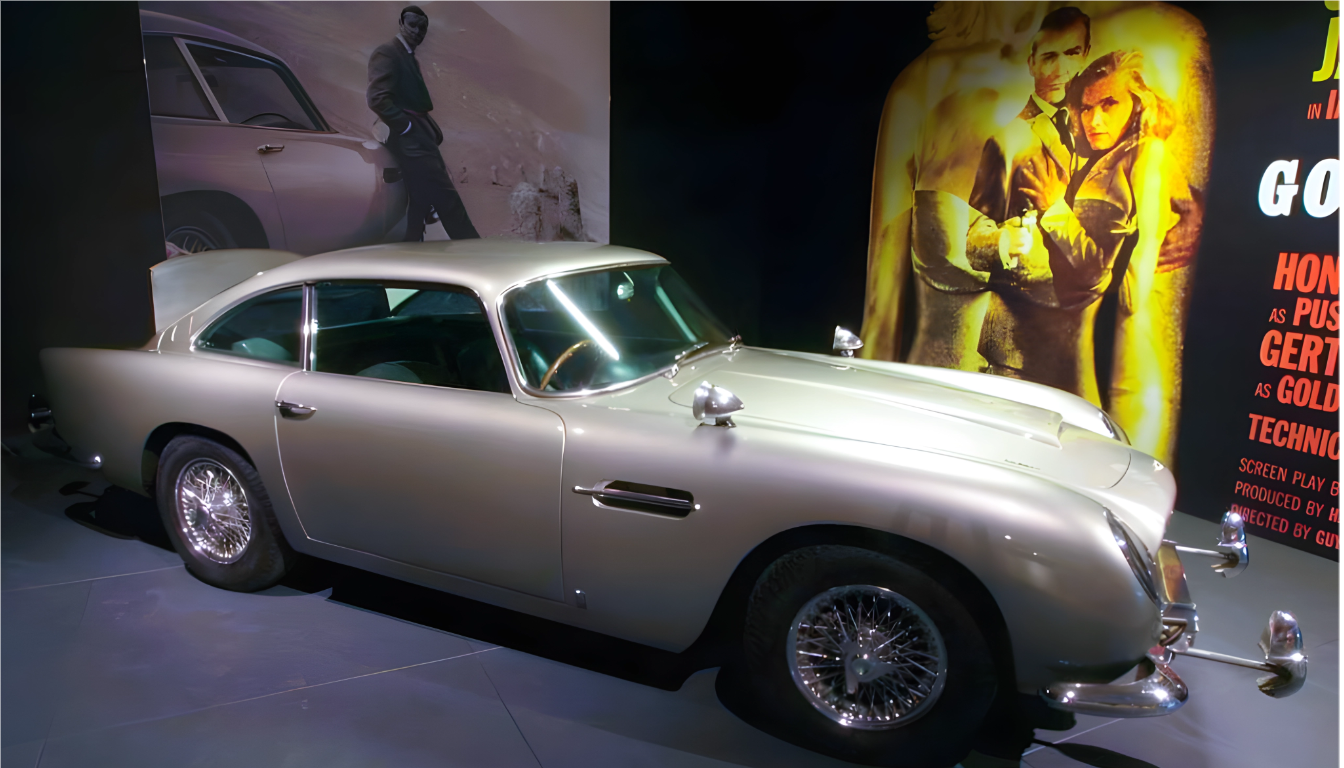
Beautiful Bond Cars:
The Automotive Icons Of Britain’s Favourite Spy
Few characters in cinema history are as iconic as James Bond. With his tuxedos, gadgets, and razor-sharp wit, he’s become a symbol of suave sophistication and action-packed adventure. But no Bond film would be complete without one of its most essential elements: the Bond car.
Fast, stylish, and frequently armed to the teeth, Bond’s cars have become legendary in their own right – so much so that they often steal the show.
Over the decades, they’ve reflected not only the tastes of their time but also Britain’s proud motoring heritage. From the unmistakable lines of the Aston Martin DB5 to the gliding elegance of a Lotus Esprit, Bond cars are more than just vehicles – they are cultural icons.
A Match Made In Motoring Heaven
The relationship between Bond and his cars began modestly. In Ian Fleming’s novels, Bond drove a battleship-grey Bentley, which – while suitably luxurious for a British gentleman – lacked the cinematic flair needed for the big screen. Enter Aston Martin.
When 1964’s Goldfinger hit cinemas, audiences were introduced to what would become arguably the most famous car in film history – the Aston Martin DB5. Sleek, silver, and bristling with gadgets (e.g. an ejector seat, rotating number plates, machine guns – the usual), the DB5 quickly established itself as the quintessential Bond car. It wasn’t just a vehicle – it was part of the character’s persona.
Since then, Bond’s garage has housed everything from British classics to foreign supercars, each chosen to reflect the spy’s evolving identity, the era’s style, and the tone of each film.
The Iconic Aston Martin
If there’s one brand that defines the Bond legacy, it’s Aston Martin. Bond and Aston go hand in hand – both are quintessentially British, stylish, and exude cool confidence.
After the DB5’s debut in Goldfinger, it returned in several films, including Thunderball, Goldeneye, Skyfall, Spectre, and No Time To Die. Its presence is always met with a knowing smile from the audience; the DB5 is not just a car – it’s a character!
Other Aston Martin models have also had their time in the spotlight. The V8 Vantage from The Living Daylights was a beefy bruiser, fitted with rockets and a self-destruct system. In Die Another Day, the Vanquish (or the ‘Vanish’, thanks to its cloaking device) showed off a more high-tech edge. And more recently, the DB10 (built specifically for Spectre) demonstrated Aston Martin’s continuing commitment to keeping Bond’s image sharp, modern, and unmistakably British.
When Bond Went Abroad
Although Aston Martin has been the go-to, Bond hasn’t always been faithful.
In the 1970s and ’80s, a period when British car manufacturing was on shakier ground, Bond dabbled with other brands. Most notably, the Lotus Esprit in The Spy Who Loved Me. Its standout moment? Driving off a pier and transforming into a submarine – a moment of pure Bond magic. That same model would return in For Your Eyes Only, albeit in less amphibious form.
Then, during Pierce Brosnan’s tenure, Bond was seen behind the wheel of BMWs – a move that divided opinion. The Z3 Roadster in Goldeneye, 750iL in Tomorrow Never Dies, and Z8 in The World Is Not Enough came loaded with gadgets, but for many fans lacked the traditional Bond flair. They were fast and clever, sure, but they felt a bit too corporate, a bit too German, and not quite Bond enough.
Cars As Character
What makes Bond cars so fascinating isn’t just their make or model – it’s what they represent. Each vehicle is tailored to the mood of the film, the personality of the actor playing Bond, and the time period in which the story unfolds.
Sean Connery’s DB5 was sleek and timeless, much like his portrayal. Roger Moore’s Lotus was quirky, gadget-heavy, and a bit tongue-in-cheek. Timothy Dalton’s Aston was dark and powerful, in keeping with his more serious Bond. Pierce Brosnan’s BMWs were high-tech and efficient – very ’90s – while Daniel Craig’s return to the DB5 symbolised a reboot; a return to Bond’s origins, with a modern edge.
And in many ways, the cars reflect Bond’s emotional state. For instance, in Skyfall, when the DB5 reappears, it’s not just for show – it’s a nod to the past, a moment of nostalgia as Bond returns to his childhood home. While in No Time To Die, the DB5 is more than just a getaway vehicle; it’s a symbol of legacy and sacrifice.
Gadgets Galore
Of course, it wouldn’t be a Bond car without a few modifications courtesy of Q Branch. Over the years, we’ve seen some truly outlandish enhancements: missile launchers, oil slicks, tyre spikes, underwater capability, self-driving systems, and even invisibility cloaks.
These aren’t just gimmicks – they serve to underscore Bond’s world, where the impossible seems probable and style is never sacrificed for substance. The gadget-laden car became a hallmark of the franchise, and fans eagerly anticipate what each new model might be hiding under its bonnet or behind the headlights.
A Lasting Legacy
Bond cars have transcended their role as props. They’ve influenced real-world car culture, inspired generations of enthusiasts, and created an enduring association between luxury motoring and British identity.
Plus, Aston Martin’s relationship with the Bond franchise has arguably helped sustain its brand through leaner years. The DB5, in particular, has become one of the most recognisable cars in the world – not just because of its beauty, but because of what it represents: adventure, elegance, danger, and charm.
Driving The Story
Bond cars are not just about speed or luxury – they’re about storytelling. They tell us who Bond is, where he’s been, and what he’s up against. Whether it’s racing through the Alps, skimming across lakes, or roaring through city streets, these cars are as much a part of the Bond mythos as shaken martinis and Walther PPKs.
That’s why for many fans, the announcement of a new Bond film doesn’t just bring questions about the villain or the actor – it creates speculation about what car he’ll drive, illustrating how closely tied to British culture James Bond and his cars have become.



